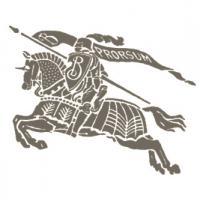
The Short Range of a Knight
We will continue this week with another light pieces endgame example. This time the position is more dynamic because both sides have passed pawns. Which side would you choose if I gave this position to you? My nature cries for the white pieces – I enjoy activity. In this case my intuition works against me as the pseudoactive placement of the white pieces cannot compensate for the fact that black has a strong bishop and an outside passed pawn. It took me a while to realize that white does not have the advantage here but has to fight for a draw. It just looks so natural to push the d-pawn, to tie the black pieces down and to jump around with the knight to capture the a7 and b6 pawns. We looked at this position with my coach IM Germanov and with his first look, he assessed the position as better for black. Of course I argued for a while and when we got to choose sides I was more than glad to pick the white side to defend my stance.
Let us look together at this position before the first game will be presented. White is down a pawn, which I hadn’t noticed until after the first game! It is easy to miss this fact because the a7 and b6 pawns are tied down by the white pawn on b5. The d-pawn is dangerous but the h-pawn is even more dangerous. Black can always give up the h-pawn and set up a blockade with the king and the bishop so the white king will not enter his position. Black wants more, so he should combine advancement of the h-pawn and moving the king closer to the d-pawn. White has to decide with which piece to stop the h-pawn: the king or the knight. Either piece can be a bit slow to get back to the rest of the fight. We will proceed to the first game, where I had white.
This game taught me a lesson: black is indeed better in the initial position. The following ideas were elucidated from the above game:
- The knight does not do a good job fighting the h-pawn if the black king is in close proximity.
- Direct attack with pushing the d-pawn while ignoring black's counterplay does not work: the bishop on b8 effectively stops the pawn.
- Both sides do not have a good move to start beside the pawn push, the position is close to zugzwang.
We shared our thoughts about the position after the first game. Germanov’s idea was to hold the black pawn with the white king, while using the knight for offense. I found an interesting idea for white where white manages to push the d-pawn and deflect the bishop from the defense of the d8 square. We played out a game based on this idea.
This game showed a completely different set of ideas compared to the previous:
- Black must keep the king in the vicinity of white's d-pawn, otherwise different tactical motifs (such as bishop deflection) can work.
- Holding the h-pawn with the king allows the black king too much freedom.
- One of white's main defensive ideas is to trade the knight for the a- and b-pawns, while capturing the h-pawn with the king.
Two games were not enough for such a complex endgame. We discovered major ideas but they are still in need of polishing. Instead of playing more games we looked at the analysis provided in the Informant. Ideally, it would be very nice to play more games and to discover all the ideas by ourselves but sometimes time is a limit.
The position is highly tactical and the evaluation of it depends on such small tactical nuances. The knight indirectly stops the h-pawn by threatening a fork if the pawn advances. What is relevant in this game is how many problems black managed to put before white. At first white found the correct maneuver Kf4-Kg4 but it seems that the Kf8! move made white nervous and the Nh1 blunder followed. It seems that Kd7 or Kd5 were easy to find but under time pressure and after spending tons of energy on the other strong moves it is not so easy. In light piece endgames sacrificing a piece for a pawn is a typical strategy: we saw this idea in all three of the games. Overall, the endgame showed the main disadvantage of the knight: its short range of operations. The knight could only perform in most cases one task at a time and sometimes not too well by not being able to stop the h-pawn with the black king in proximity. White would be so much better off if they had a bishop in this endgame. This was the case where black got to play on all parts of the board over the long range.
Next week we will proceed to pawn endgames. Try to calculate ahead as much as you can. They say there is no intermediate evaluation of position in pawn endgames. The evaluation is either win, loss or draw. White to move.






